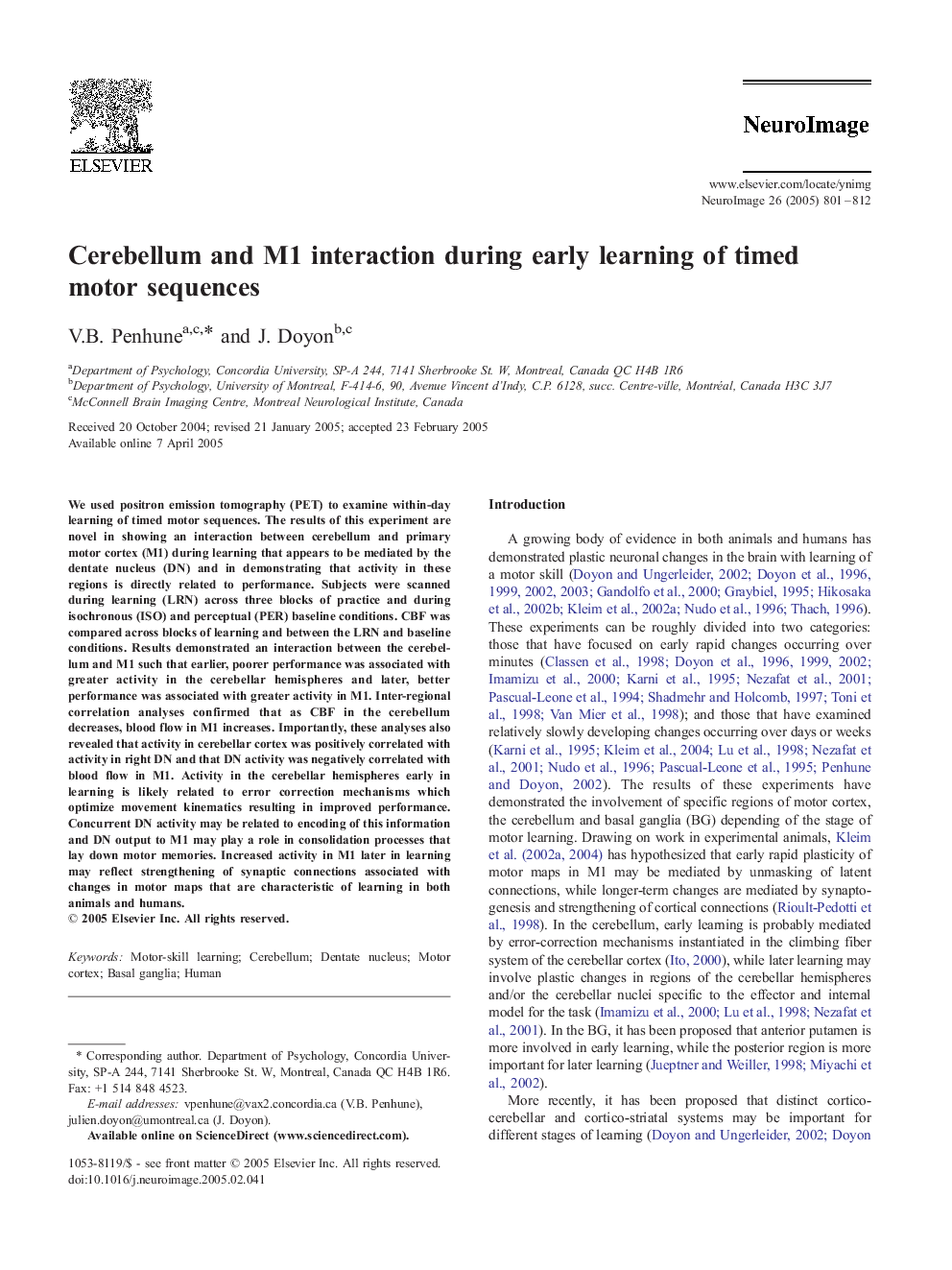| Article ID | Journal | Published Year | Pages | File Type |
|---|---|---|---|---|
| 9198374 | NeuroImage | 2005 | 12 Pages |
Abstract
We used positron emission tomography (PET) to examine within-day learning of timed motor sequences. The results of this experiment are novel in showing an interaction between cerebellum and primary motor cortex (M1) during learning that appears to be mediated by the dentate nucleus (DN) and in demonstrating that activity in these regions is directly related to performance. Subjects were scanned during learning (LRN) across three blocks of practice and during isochronous (ISO) and perceptual (PER) baseline conditions. CBF was compared across blocks of learning and between the LRN and baseline conditions. Results demonstrated an interaction between the cerebellum and M1 such that earlier, poorer performance was associated with greater activity in the cerebellar hemispheres and later, better performance was associated with greater activity in M1. Inter-regional correlation analyses confirmed that as CBF in the cerebellum decreases, blood flow in M1 increases. Importantly, these analyses also revealed that activity in cerebellar cortex was positively correlated with activity in right DN and that DN activity was negatively correlated with blood flow in M1. Activity in the cerebellar hemispheres early in learning is likely related to error correction mechanisms which optimize movement kinematics resulting in improved performance. Concurrent DN activity may be related to encoding of this information and DN output to M1 may play a role in consolidation processes that lay down motor memories. Increased activity in M1 later in learning may reflect strengthening of synaptic connections associated with changes in motor maps that are characteristic of learning in both animals and humans.
Related Topics
Life Sciences
Neuroscience
Cognitive Neuroscience
Authors
V.B. Penhune, J. Doyon,
